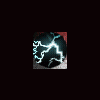-
Posts
1345 -
Joined
-
Last visited
Content Type
Profiles
Forums
Gallery
Store
Everything posted by 99obw
-
I really really really wish the 3.0 didn't require premium fuel. That makes it so much less attractive to me. How many horses would be lost by changing the pistons to get a lower compression ratio? If lowering the CR brought it to the same hp/ci as the 2.5 it would have 198 hp. [confession] We are looking seriously at a Toyota Sienna AWD minivan for our next vehicle. 3.3l 230 HP on regular fuel. EPA 18/24. That should put the fuel cost really close to a 3.0 outback, in a 4,365lb vehicle that can tow 3500lb. (are you listening Subaru?) It's more expensive, but I hope the increase in reliability will make up for it. [/confession]
-
I have heard the heated garage thing before. My garage is underground (basement + garage = barage), and I have never seen it colder than 40°F, usually close to 50°F without the wood stove going, or up to 90°F+ with the stove(oops, open a door or something would ya!). It does make sense that melting the salty crap every night and letting it into all of the nooks and crannies can't be a good thing. Getting into a 40°F car when it's -10°F out, not having to scrape, it's definately worth the extra rust. Not to mention how much better for the engine and other systems it is. I think washing and waxing are probably pretty important too. Two things I don't do very often. Living on a dirt road makes it all seem pointless.
-
A leakdown test won't conclusively find most Phase I head gasket failures. Testing the coolant for combustion gasses is more conslusive. You might try the bubble test. Get the engine fully warmed up, then beat on it really hard for a few miles. Then stop the car, raise the hood, and look in the overflow bottle while revving the engine to 2k-3k rpm. If you see bubbles it is most likely a head gasket.
-
I think we are talking about two different scenarios here. 1. You are going to take the belt off. Haynes advises to align the engine to #1 TDC. This is good advice. Most manuals recommend the same thing when removing timing components, regardless of engine design. I do this. I use a compression tester in #1 to bring it to TDC. Doing this may be more important on interference engines where you want to be very sure of where the pistons and valves are in relation to each other. 2. The belt has been taken off and the crank and cams have been turned all willy nilly. This is what I was trying to describe in my previous posts.
-
I think the bendix rebuilt calipers from carparts.com for $41.70 are looking interesting. I hesitate to buy non-OEM but I have had pretty good luck with bendix. I can buy four for each OEM. I have had pretty good luck with parts store rebuilt calipers in the past. Hmmmmmm. I am not so sure about rebuilding the ones that are on there. Sounds like another never ending PITA project waiting to happen.
-
I drove the outback today and the rear brakes are not working very well. The pads and rotors are fine. Based on what the calipers looked like the last time I looked I am pretty sure that they either need to be rebuilt or replaced. Does anyone know what parts come in Subaru's caliper overhaul kit? $18.71 Has anyone had experience with rebuilt calipers from internet or retail sources. The calipers from 1stsubaruparts are $173.19 each.
-
I first must say that I have very little experience dealing with noisy car audio, but I do have experience dealing with noisy power supplies in general. I assume your noise suppressors are chokes. A capacitor between the inductor (choke) and the load will increase the strength of the low pass effect on the power rail. You may need to experiment with different value caps, larger capacitors target lower frequencies. Beware of inrush current, an empty cap looks like a short to ground when the power is first turned on. I don't know if this will work, but sometimes a Pi filter works well for filtering both the power and ground to a piece of equipment. A Pi filter is basically a common-mode choke with a cap on either side. Make sure your battery has a relatively low series resistance. The battery is a filter for alternator noise. Series resistance in the battery will increase the system voltage swings as a function of charge/discharge current. EDIT: I must add here that excessive resistance elsewhere in the system might add to noise, so battery cables and other connections must be checked. You might try another alternator as well. Your current alternator is probably overloaded. I don't know how your grounds are laid out, you might try a star configuration. Electrical noise, audible and otherwise, is a black art. Some experimentation is always necessary.
-
I have given this some consideration myself. I think if I had the engine out for some reason, i.e. clutch, rear main seal, rear oil leak plate, I would take the heads off and have them checked for straightness and change the gaskets. I would probably also adjust the valves. Some level of valve job may not be a bad idea either. I really don't know if I would tear into a good engine without provocation. If we had good statistical data on Phase I head gasket failures a more informed decision would be possible, but we don't. If nothing else, the DOHC engine is cool, and working on it is a joy. It would be a good learning experience. If I do it again I will do things differently, that's for sure.



